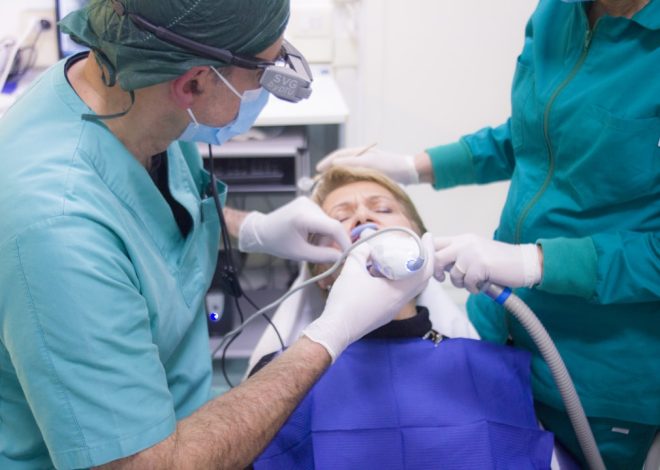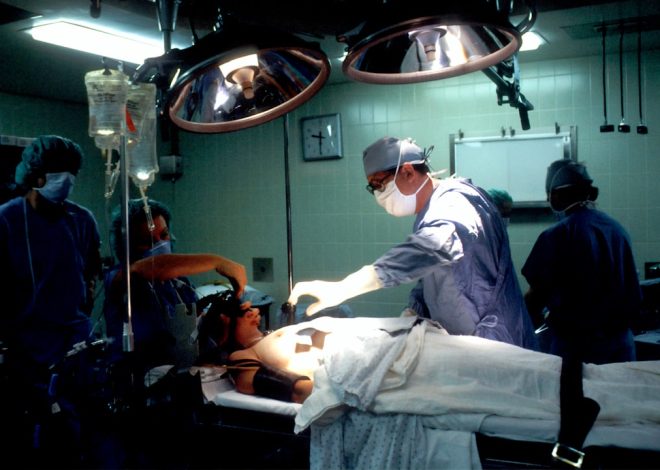
Revolutionizing Wound Closure with Skin Stapler
Skin staplers are medical devices used for closing wounds in a quick and efficient manner. They are commonly used in surgical procedures, emergency room settings, and for closing lacerations and incisions. Skin staplers have become a popular alternative to traditional wound closure methods such as sutures and adhesive strips due to their ease of use and ability to provide strong and secure wound closure. The use of skin staplers can help reduce the time required for wound closure, minimize tissue trauma, and improve patient outcomes. In this article, we will explore the advantages of skin staplers over traditional wound closure methods, how they work, the different types of skin staplers available, considerations for using them, successful case studies, and future developments in skin stapler technology.
Key Takeaways
- Skin staplers are medical devices used for closing wounds quickly and efficiently.
- Advantages of skin staplers over traditional wound closure methods include faster closure, reduced risk of infection, and minimal scarring.
- Skin staplers work by placing and securing metal staples across the wound, holding the edges together for healing.
- Types of skin staplers include disposable and reusable, as well as different staple sizes for various wound types.
- Considerations for using skin staplers include proper technique, patient comfort, and potential complications such as staple line infections.
- Case studies have shown successful use of skin staplers in various surgical and trauma settings, demonstrating their effectiveness in wound closure.
- Future developments in skin stapler technology may include improved ergonomic designs, staple materials, and integration with other surgical tools for enhanced efficiency.
Advantages of Skin Staplers over Traditional Wound Closure Methods
One of the main advantages of using skin staplers over traditional wound closure methods is the speed at which wounds can be closed. Skin staplers are designed to quickly and efficiently close wounds, which can be especially beneficial in emergency situations or during surgical procedures where time is of the essence. Additionally, skin staplers provide a more consistent and uniform closure compared to sutures, which can lead to better cosmetic outcomes and reduced scarring. Another advantage of skin staplers is that they can be used on a variety of wound types and sizes, making them a versatile option for healthcare providers. Furthermore, skin staplers are less technique-sensitive than sutures, making them easier to use for healthcare professionals with varying levels of experience. Overall, the advantages of skin staplers over traditional wound closure methods make them a valuable tool in the medical field.
On top of that, skin staplers can also reduce the risk of infection compared to traditional wound closure methods. The design of skin staplers allows for minimal tissue trauma during wound closure, which can help reduce the risk of infection and promote faster healing. Additionally, the use of skin staplers can lead to less patient discomfort compared to sutures, as they cause less tissue irritation and are less likely to cause tissue strangulation. This can lead to improved patient satisfaction and compliance with post-operative care instructions. Furthermore, skin staplers can be applied with precision, allowing for accurate wound edge approximation and reducing the risk of dehiscence (wound reopening). The reduced risk of infection, patient discomfort, and wound complications make skin staplers a preferred choice for many healthcare providers.
How Skin Staplers Work
Skin staplers work by applying metal staples to the edges of a wound in order to close it securely. The staples are typically made of stainless steel or titanium, which are biocompatible materials that are safe for internal use. The skin stapler is designed with a handle that is used to apply pressure to the tissue and deploy the staples. The staples are placed in a staggered formation along the length of the wound, providing strong and even closure. The design of skin staplers allows for quick and efficient application, making them an ideal choice for healthcare providers who need to close wounds rapidly.
In addition to their speed and efficiency, skin staplers also provide excellent tensile strength, ensuring that the wound remains closed during the healing process. This is particularly important in surgical procedures where the wound may be under tension or stress. The use of skin staplers can help prevent wound dehiscence and reduce the risk of complications during the healing process. Overall, the mechanism of action of skin staplers makes them a reliable and effective option for wound closure in a variety of clinical settings.
Types of Skin Staplers
| Stapler Type | Features | Applications |
|---|---|---|
| Disposable Skin Stapler | Single-use, pre-loaded with staples | Minor skin lacerations, surgical incisions |
| Reloadable Skin Stapler | Refillable with staple cartridges | General surgery, trauma cases |
| Powered Skin Stapler | Battery-operated, automated stapling | High-volume surgical procedures |
There are several different types of skin staplers available, each designed for specific clinical applications. The most common type of skin stapler is the disposable manual skin stapler, which is used for closing lacerations and surgical incisions. These staplers are lightweight, easy to handle, and provide consistent staple formation. Another type of skin stapler is the disposable cartridge-based skin stapler, which uses a disposable cartridge containing multiple staples. This type of skin stapler is often used in surgical settings where a large number of staples may be required.
In addition to manual and cartridge-based skin staplers, there are also powered skin staplers that use a motorized mechanism to apply the staples. These powered staplers are designed for high-volume procedures and can help reduce hand fatigue for healthcare providers. Some powered skin staplers also feature adjustable staple height and spacing, allowing for customization based on the specific needs of the wound. Overall, the different types of skin staplers available provide healthcare providers with options to suit their specific clinical needs.
Considerations for Using Skin Staplers
While skin staplers offer many advantages for wound closure, there are several considerations that healthcare providers should keep in mind when using them. It is important to ensure that the appropriate staple size and type are selected based on the thickness and location of the tissue being closed. Additionally, proper technique is essential for achieving optimal wound closure with skin staplers. Healthcare providers should be trained on the correct use of skin staplers to ensure safe and effective application.
Furthermore, it is important to consider patient factors such as allergies or sensitivities to metal when using skin staplers. Healthcare providers should also be mindful of potential complications such as staple line infections or staple reactions, and take appropriate measures to prevent these issues. Overall, careful consideration and proper technique are essential for successful and safe use of skin staplers in wound closure.
Case Studies: Successful Use of Skin Staplers in Wound Closure

There have been numerous case studies demonstrating the successful use of skin staplers in wound closure across various clinical settings. In a study published in the Journal of Emergency Medicine, researchers found that skin staplers were associated with faster wound closure times compared to sutures in the emergency department setting. The study also reported high patient satisfaction with the use of skin staplers for wound closure.
In another case study published in Plastic and Reconstructive Surgery Global Open, researchers reported successful outcomes with the use of skin staplers for closing scalp lacerations in pediatric patients. The study found that skin staplers provided rapid and effective wound closure with minimal patient discomfort. These case studies highlight the successful use of skin staplers in various clinical scenarios and support their effectiveness as a wound closure method.
Future Developments in Skin Stapler Technology
As technology continues to advance in the medical field, there are ongoing developments in skin stapler technology aimed at improving efficiency and patient outcomes. One area of development is the integration of ergonomic design features into skin staplers to reduce hand fatigue and improve user comfort during prolonged use. Additionally, there is ongoing research into biodegradable staples that could potentially eliminate the need for staple removal in certain cases.
Furthermore, advancements in staple design are focused on creating staples with improved tissue retention and reduced risk of complications such as staple line infections. Some researchers are also exploring the use of bioactive coatings on staples to promote tissue healing and reduce inflammation at the staple site. Overall, future developments in skin stapler technology hold promise for further improving wound closure outcomes and patient experiences.
In conclusion, skin staplers offer numerous advantages over traditional wound closure methods, including speed, consistency, strength, and reduced risk of infection. They work by applying metal staples to close wounds quickly and efficiently, with different types available to suit specific clinical needs. However, careful consideration and proper technique are essential when using skin staplers to ensure safe and effective application. Case studies have demonstrated successful outcomes with the use of skin staplers in various clinical scenarios, supporting their effectiveness as a wound closure method. Ongoing developments in skin stapler technology hold promise for further improving efficiency and patient outcomes in wound closure procedures.
FAQs
What is a skin stapler?
A skin stapler is a medical device used to close wounds in the skin quickly and efficiently. It is commonly used in surgical procedures and emergency medicine.
How does a skin stapler work?
A skin stapler works by placing small metal staples across the edges of a wound, holding the skin together to promote healing. The staples are typically removed once the wound has healed.
What are the advantages of using a skin stapler?
Some advantages of using a skin stapler include faster closure of wounds, reduced risk of infection, and less tissue trauma compared to traditional sutures.
Are there any risks or complications associated with using a skin stapler?
While skin staplers are generally safe, there are potential risks and complications such as staple line infections, staple line dehiscence, and allergic reactions to the metal in the staples.
How are skin staples removed?
Skin staples are typically removed using a staple remover tool, which is designed to safely and easily extract the staples from the skin without causing additional trauma.
Can anyone use a skin stapler?
Skin staplers should only be used by trained medical professionals who have been properly trained in their use. Improper use of a skin stapler can lead to complications and poor wound healing.


